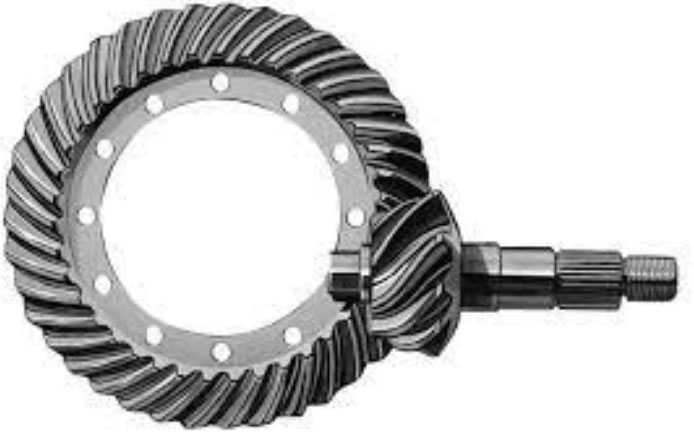Hypoid gears are an important type of gears used in various applications, offering unique advantages in terms of design, performance, and reliability. To understand the science behind hypoid gears, let’s delve into the key elements that contribute to their functionality:

1. Hypoid Offset: Hypoid gears derive their name from the hypoid offset, which refers to the non-intersecting and non-parallel axes of the pinion gear and ring gear. This offset allows the gears to have a larger contact area, resulting in enhanced load-carrying capacity and torque transmission.
2. Tooth Profile: The tooth profile of hypoid gears is based on a spiral bevel gear geometry. The teeth are curved, resembling a spiral shape, which enables smooth and gradual engagement between the pinion and ring gears. This curved tooth profile ensures uniform distribution of load and minimizes contact stresses, leading to improved durability and reduced noise and vibration levels.
3. Gear Ratio: The gear ratio of hypoid gears plays a crucial role in determining the speed and torque conversion between the input and output shafts. The gear ratio is determined by the number of teeth on the pinion and ring gears. By adjusting the gear ratio, specific speed and torque requirements can be achieved for different applications.
4. Contact Pattern and Alignment: Achieving proper contact pattern and alignment is critical for optimal performance and longevity of hypoid gears. The contact pattern refers to the precise point of contact between the tooth surfaces of the pinion and ring gears. Proper alignment ensures that the contact pattern is evenly distributed across the tooth surfaces, minimizing wear and maximizing load distribution.
5. Manufacturing Process: Hypoid gears require specialized manufacturing processes due to their unique geometry. The manufacturing process involves precision machining and grinding to achieve accurate tooth profiles and precise tooth-to-tooth alignment. CNC machining and advanced gear cutting technologies are commonly employed to ensure high-quality hypoid gears.
6. Lubrication: Proper lubrication is essential for the smooth operation and longevity of hypoid gears. The lubricant forms a thin film between the gear teeth, reducing friction, dissipating heat, and preventing wear and damage. The selection of the appropriate lubricant and regular maintenance of the lubrication system are crucial to ensure optimal performance and reliability.
7. Application-Specific Considerations: The design and performance of hypoid gears can be tailored to specific application requirements. Factors such as torque capacity, speed, noise level, space constraints, and environmental conditions need to be taken into account during the design and engineering process.
By understanding the science behind hypoid gears, engineers can optimize their design, manufacturing, and performance for a wide range of applications. It is important to work with experienced gear manufacturers and utilize advanced simulation and analysis tools to ensure the accuracy, efficiency, and reliability of hypoid gear systems in various industries.
